Monday, August 2nd 2021
Ultra-tiny Carbon Nanotubes Deliver Big on Headphone Audio Experience
I know what you are thinking—this isn't the typical news content we see on TechPowerUp. Yes, we do cover audio products with plenty of reviews here, including Audeze planar magnetic headphones. When Audeze mentioned there's a whole different thing coming up, and that it involves carbon nanotubes (CNTs), I was quite intrigued. Some of you may have picked it up by now, but all the neat toys I have access to and used in several reviews come because I am a research scientist by profession, with a specialization in carbon nanomaterials including CNTs. So this news post is about my attempt to help explain why the Audeze technology is such a big deal. This is not a review of the actual devices and neither is it a sponsored post, or even solicited by Audeze. It is purely me geeking out about a fairly novel use of CNTs in the audio world, especially when there have been CNT coatings on a few dynamic drivers before but barely put to the potential capable until now.
See, the whole reason the Audeze CRBN (Carbon, get it?) even came about is because an indirect research colleague of mine, Prof. Mark Cohen from the University of California, Los Angeles as well as his startup company SMRT Image, saw a need for a more calming influence for patients undergoing fMRI imaging, as well as better means for the technicians to communicate with said patients while they are inside an operating MRI machine. If you have ever been inside one, you would know that thing gets real loud with magnetic coils rapidly going around and clacking noises galore. Audeze is also based in California, and multiple years of research led to the development of the Audeze CRBN—starting off for medical applications and then coming out also as a high-end retail headphones experience based on the knowledge and IP gained in the process. Read past the break for more on the science and tech, if this is of interest to you!At this point, a logical question would be what happens if the sounds are loud inside an MRI machine? Can't the patient simply wear ear protection such as ear defenders that have been successfully used in other loud use cases, including construction? Typical noises inside an MRI machine can get as loud as 120 dB, which is similar to having a jackhammer going next to you. More often than not, there is also a head constraint device used to mitigate motion which in turn does not allow for larger ear defenders to be used. Any magnetic/ferromagnetic metal is also a big no-no since the magnetic coils of the MRI can rip them out owing to the strong magnetic field. This is why piercings are to be removed prior to imaging, else you might end up replicating one of the few good scenes from Terminator Genisys. Small ear plugs only go so far too in terms of isolation provided, especially in the absence of a custom fit. In fact, even some metals can generate Eddy currents that can impact imaging inside. When the slightest of motion can result in poor imaging, it is important to have good noise isolation. At the same time, having a clear line of communication with the technician is also critical, which makes this harder to achieve.
Current solutions tend to go the way of silicone earphones without a lot of metal in them, which means the actual drivers have to be configured in a challenging manner. Having aided with some MRI research myself, albeit for different purposes, I was thus curious about what the answer was long-term for patients who get stress and anxiety over a scan to begin with, let alone any effects of claustrophobia and phonobia. Active noise cancellation seems like the way to go, but once again the actual drivers for the headphones are a challenge since you can't use wireless tech here and specialized MRI noise cancellation is either $$$$$$ in the form of external drivers with long, shielded cables or not very effective. There is thus a need for conductive driver materials which are not metallic, or at least non-magnetic and unaffected by the magnetic flux generated by the MRI. Planar magnetic headphones are clearly not the answer either, since they are driver by high magnetic flux internally so any external magnetic field can cause all sorts of havoc.Enter carbon nanotubes, and more specifically single-walled carbon nanotubes at that. A single wall carbon nanotube (SWCNT) is a carbon allotrope envisioned by rolling up a graphene sheet, which in turn is a single layer of graphite that itself can be visualized as a flat sheet of carbon atoms. The nature of rolling said sheet dictates what is called the chirality of the SWCNT, with the maximum possible chiralities and chiral angle (of rolling) between 0° and 30° relative to the plane, based on thermodynamics allowing only those to exist in a stable state. One of these extremities (armchair) is the best possible electrical conductor, and the other extremity (zigzag) a semiconductor. Anywhere in between and you get semi-metals and metals in that you have electron transfer but it is still carbon on the macroscale. See where I am getting at? If the diaphragm of a typical headphone driver setup were to be made of SWCNTs, then that would solve the big issue from above. The next challenges involve (a) how to get the SWCNTs as a diaphragm/transducer, and (b) how to actually drive it. Audeze and its collaborator ended up going with a suspension of SWCNTs in a polyimide, which is one of the several options available. I might have gone another route depending on the suspension thickness and desired qualities, but here we are anyway. This suspension allows a stable film to be made that has the SWCNTs inside, ideally uniformly to thus also have uniform electrical conductivity.The second challenge was seemingly addressed by using these ultra-thin SWCNT diaphragms as a conductive media for electrostatic charge, which forms the basis for electrostatic headphones. I don't have a lot of experience with this class of headphones yet, but I understand the science behind how they work in needing a high driving potential (think 800-1000 Vrms) to generate the electrostatic field that in turn vibrates the diaphragm to generate sound waves. This decoupling mechanism of driving the headphones without the need for classically metallic drivers should help also place active noise cancelling materials along the way, which seems to have been done with the MRI imaging version of the Audeze CRBN that I understand will be sold through SMRT Image directly in Q4 2021.
The other end of this technology comes with the retail version, just referred to as Audeze CRBN with a rated 100 pF electrostatic capacitance. As it turns out, having the ultra-thin diaphragm allows for more accuracy in the reproduced sound signature, or so Audeze claims anyway at this point without much independent testing having been done aside from a few music recording artists sharing their opinions. It does have some logic behind it, since the way I see increased audio fidelity and resolution to be is to have effectively an ultra-thin diaphragm with nothing in front of it, and as uniform a force as possible pushing and pulling it back as needed. Planar magnetic drivers come close, but ribbon drivers as seen in the recently launched and sold-out Audeze LCD-R are a further step in that direction. With these electrostatic drivers, Audeze and everyone else in the game aims to go even beyond in the race for extreme neutrality and accuracy, but with the added benefit of not weighing as much as the typical full-size planar magnetic drivers either. Take that for what you will, but music monitoring is going to be a key use case here if so. If you have $4500 to spend on a pair of the Audeze CRBN, and more for a standard electrostatic amplifier using the 5-pin connector and rated for 570 V, then you can try this out for yourself when orders open up on the Audeze website as well as some retailers. Once again I have to stress that I do not have any idea how these sound at this point or whether they merit the money. Hopefully some of you found this interesting, and feel free to share your thoughts as comments below.
Source:
Audeze
See, the whole reason the Audeze CRBN (Carbon, get it?) even came about is because an indirect research colleague of mine, Prof. Mark Cohen from the University of California, Los Angeles as well as his startup company SMRT Image, saw a need for a more calming influence for patients undergoing fMRI imaging, as well as better means for the technicians to communicate with said patients while they are inside an operating MRI machine. If you have ever been inside one, you would know that thing gets real loud with magnetic coils rapidly going around and clacking noises galore. Audeze is also based in California, and multiple years of research led to the development of the Audeze CRBN—starting off for medical applications and then coming out also as a high-end retail headphones experience based on the knowledge and IP gained in the process. Read past the break for more on the science and tech, if this is of interest to you!At this point, a logical question would be what happens if the sounds are loud inside an MRI machine? Can't the patient simply wear ear protection such as ear defenders that have been successfully used in other loud use cases, including construction? Typical noises inside an MRI machine can get as loud as 120 dB, which is similar to having a jackhammer going next to you. More often than not, there is also a head constraint device used to mitigate motion which in turn does not allow for larger ear defenders to be used. Any magnetic/ferromagnetic metal is also a big no-no since the magnetic coils of the MRI can rip them out owing to the strong magnetic field. This is why piercings are to be removed prior to imaging, else you might end up replicating one of the few good scenes from Terminator Genisys. Small ear plugs only go so far too in terms of isolation provided, especially in the absence of a custom fit. In fact, even some metals can generate Eddy currents that can impact imaging inside. When the slightest of motion can result in poor imaging, it is important to have good noise isolation. At the same time, having a clear line of communication with the technician is also critical, which makes this harder to achieve.
Current solutions tend to go the way of silicone earphones without a lot of metal in them, which means the actual drivers have to be configured in a challenging manner. Having aided with some MRI research myself, albeit for different purposes, I was thus curious about what the answer was long-term for patients who get stress and anxiety over a scan to begin with, let alone any effects of claustrophobia and phonobia. Active noise cancellation seems like the way to go, but once again the actual drivers for the headphones are a challenge since you can't use wireless tech here and specialized MRI noise cancellation is either $$$$$$ in the form of external drivers with long, shielded cables or not very effective. There is thus a need for conductive driver materials which are not metallic, or at least non-magnetic and unaffected by the magnetic flux generated by the MRI. Planar magnetic headphones are clearly not the answer either, since they are driver by high magnetic flux internally so any external magnetic field can cause all sorts of havoc.Enter carbon nanotubes, and more specifically single-walled carbon nanotubes at that. A single wall carbon nanotube (SWCNT) is a carbon allotrope envisioned by rolling up a graphene sheet, which in turn is a single layer of graphite that itself can be visualized as a flat sheet of carbon atoms. The nature of rolling said sheet dictates what is called the chirality of the SWCNT, with the maximum possible chiralities and chiral angle (of rolling) between 0° and 30° relative to the plane, based on thermodynamics allowing only those to exist in a stable state. One of these extremities (armchair) is the best possible electrical conductor, and the other extremity (zigzag) a semiconductor. Anywhere in between and you get semi-metals and metals in that you have electron transfer but it is still carbon on the macroscale. See where I am getting at? If the diaphragm of a typical headphone driver setup were to be made of SWCNTs, then that would solve the big issue from above. The next challenges involve (a) how to get the SWCNTs as a diaphragm/transducer, and (b) how to actually drive it. Audeze and its collaborator ended up going with a suspension of SWCNTs in a polyimide, which is one of the several options available. I might have gone another route depending on the suspension thickness and desired qualities, but here we are anyway. This suspension allows a stable film to be made that has the SWCNTs inside, ideally uniformly to thus also have uniform electrical conductivity.The second challenge was seemingly addressed by using these ultra-thin SWCNT diaphragms as a conductive media for electrostatic charge, which forms the basis for electrostatic headphones. I don't have a lot of experience with this class of headphones yet, but I understand the science behind how they work in needing a high driving potential (think 800-1000 Vrms) to generate the electrostatic field that in turn vibrates the diaphragm to generate sound waves. This decoupling mechanism of driving the headphones without the need for classically metallic drivers should help also place active noise cancelling materials along the way, which seems to have been done with the MRI imaging version of the Audeze CRBN that I understand will be sold through SMRT Image directly in Q4 2021.
The other end of this technology comes with the retail version, just referred to as Audeze CRBN with a rated 100 pF electrostatic capacitance. As it turns out, having the ultra-thin diaphragm allows for more accuracy in the reproduced sound signature, or so Audeze claims anyway at this point without much independent testing having been done aside from a few music recording artists sharing their opinions. It does have some logic behind it, since the way I see increased audio fidelity and resolution to be is to have effectively an ultra-thin diaphragm with nothing in front of it, and as uniform a force as possible pushing and pulling it back as needed. Planar magnetic drivers come close, but ribbon drivers as seen in the recently launched and sold-out Audeze LCD-R are a further step in that direction. With these electrostatic drivers, Audeze and everyone else in the game aims to go even beyond in the race for extreme neutrality and accuracy, but with the added benefit of not weighing as much as the typical full-size planar magnetic drivers either. Take that for what you will, but music monitoring is going to be a key use case here if so. If you have $4500 to spend on a pair of the Audeze CRBN, and more for a standard electrostatic amplifier using the 5-pin connector and rated for 570 V, then you can try this out for yourself when orders open up on the Audeze website as well as some retailers. Once again I have to stress that I do not have any idea how these sound at this point or whether they merit the money. Hopefully some of you found this interesting, and feel free to share your thoughts as comments below.
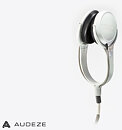

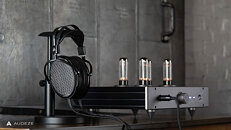

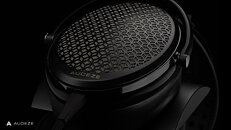
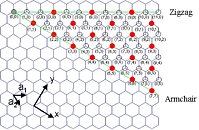
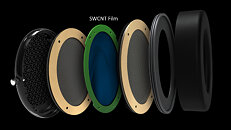
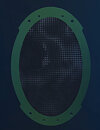

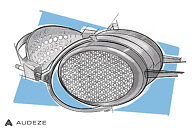
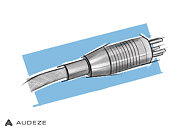
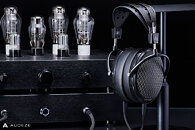
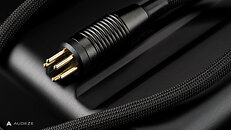
47 Comments on Ultra-tiny Carbon Nanotubes Deliver Big on Headphone Audio Experience
I've been trying high end headphones for years. The prices are crazy but I get why people buy them. They do tend to sound awesome. For some people thats worth it. I myself have about 1500 worth of headphones. Most expensive pair are the cheap Audeze... so like 800 bucks lol
I like different ones on different days. I do 4 hours of music per day, minimum. Given the time I put in, why not go primo?
I mean, were not talking cables and magic rocks here. High end headphones are luxury items. They arent typically produced in huge quantities, they arent always cheap to make. These arent consumer headphones.
The level of disdain people have for this always gets me a little, like its their money being spent. Too much emotional energy for something someone doesnt even engage with.
Besides, unlike GPUs, these will only get cheaper. Planars used to cost thousands of dollars and now you can get a set for a couple hundred bucks. You can eyeroll at the price all you want, but people spend wayyyyyyy more than $5k on AV equipment. At least it doesn’t date itself in >5 years.
I think what happened was pretty simple. All of the people who made planars decades ago kinda fell off of it. It almost became forgotten tech to many. Dang, man... I remember people all over the internet wondering "WTF is an orthodynamic?" in 2010. It just wasn't something people even knew about. People used to know how to mass produce them exceptionally well in the 70s. You could buy generic OEM ortho drivers to toss into enclosures like is done with dynamics now. I don't know much about the history, but they lost out. I think they were just a little too challenging, compared to regular moving coil drivers.
The people who make planars probably learned what they could, but I think what we saw was all of these companies learning to make planars for the first time, when nobody else was making them or really even talking about them. Scouring the old tomes. Disassembling those old fostex pairs. It was all small time. Boutique stuff. Of course they were expensive. Nobody gave a shit about them yet. Consistency is the number one plague with making those sorts of drivers, though. The yields had to be terrible.... and even the ones that made it out could be quite unreliable... unlike those old fostex planars from the 70's or whatever that still work like champs. Over time, appeal went up, and everyone got better at working with the membranes, sorting out tonal weirdness, building enclosures.
To me, that's just adoption. I'd love to see estats join alongside the rise of the orthodynamic. That would be sweet. I mean, you have those Koss guys over there. Those seem to get some appeal. I think they're interesting. I always keep in my head to peel back for a pair of ESP950's if they come with an improved amp at a good price. That's easy electrostatic at or under 1k. Just doesn't come around much because there ain't much to go around and people who like them keep them forever and nobody else seems to want them. I don't get it. They sound cool.
oh one other thing to add, electrostatics don't work on low frequencies, there is some danger that may cause short circuit, so there is a high pass filter at about 100 hz or so, so you will need a classic subwoofer with them
Death of the author and all of that. Once you put your production, your work, out there for people to consume... those people will pretty much treat it as suits them. This always has to be the understanding, the expectation of the producer, that he cannot account for everyone's listening conditions. They'll be on their own with it. That doesn't make it necessarily wrong. This does not mean disregard all expertise, but also do not disregard your expertise in your own experience... within reason. Because there are magic rocks out there for people who trust their experience a little too much too. But basically, if the guys in the studio did it this way, but you like it better that way, do it that way! Like, why ever would you choose the option you like less? I need for there to be a better reason than authorial intent here, it's not enough. It doesn't make any sense, from an appreciation standpoint. You lose enjoyment of the art to that in too many cases. There's plenty of room for preference in all of this. Studio technicians have as many preferences as the musicians they record. It doesn't mean that the audience will always agree with their sensibilities. That's a total coin toss.
I mean, there are piles of crap mixes out there that will sound good on the 'wrong' gear and bad on everything normal. Again, how is one to reasonably account for the whole range of sensibilities and techniques of every different producer across genres and eras? That just sounds like an utterly psychotic preposition to me. Don't wanna be harsh but it actually makes me laugh to think about it, just on the amatuer side, learning how different producers do it... and more importantly, what they go for and why. So many schools of thought and different ears intertwining. I would never wish to go down that rabbit hole. I could already be enjoying the music.
Of course low frequency extension is out, that's the price you pay for the distortion characteristics and mid-high frequency behavior that give them their characteristic sound. They are also more delicate. Don't be a dum dum and EQ the bass up 6db. Care for them. Lets also not pretend like they are squeaky clean. You're not getting 'pure' sound out of them any more than anything else. It's really all flavors with headphones. It's just not normally how we hear things. Right from the get go you've got drivers strapped right to your ears, messing with the interactions that usually help us make sense of things. The whole experiential package is a totally different construct from speakers, which are also quite different from live sound.
I'll put it this way... all headphones sound like headphones to me. At no point do any of them transcend that. That is to say coloration of all manner is a given. It's just a matter of the compromises taken in the design. The physics are what they are.
That's just me, maybe I'm just more easygoing with things. It's all just a wider range of experiences with music to me at the end of the day. I value that a lot. It's cliche but music really is my drug. My brain doesn't work like most peoples. They even checked! Music does a lot for me in that regard. I don't see why this stuff has to be this complicated... have this many rules. You can just enjoy it.
This is a wonderful post. I enjoyed reading about this technology. It was new to me and interesting. Please do more of these.
Rather than opening with a price, don't post a price at all. Maybe then they won't treat it like a sales pitch.
depending what amp/dac they are best paired with, but I am guessing, they won't be nearly as expensive as electrostat high end amp/dac in price to compete.It's more like 1% ultra wealthy who pretend they care, then there is the 20% upper middle class pull ladder up behind them hire only friends and family, then there is 10% shrunken middle class and 69% poor or struggling lower middle class. my family used to be middle class before 2008 economic crisis. my dad's retirement was destroyed and frozen and never unfrozen even after the economy recovered. he currently works 7 days a week, while the people who caused the 2008 economic crisis are still enjoying their mercede's and bmw's etc etc. neat world huh?
Give me an even better version of the ADX5000s and I will sell my car and walk 15km to work every day just to buy them. It's a good way to never get fat and I don't like driving anyway.
Why even bother making electric cars, basically the same right? /s
You can make cars with 5 wheels too if you wish, and spin it as the next great thing. The core tech is same. If look at the fundamental problems with your battery and motor, the core problems are the still the same as in 1900. Nobody cancelled physics.
All we see here is just PR brainwash. You took the bait? Willing to invest? Good.
But it ain't something special as it is marketed to be.